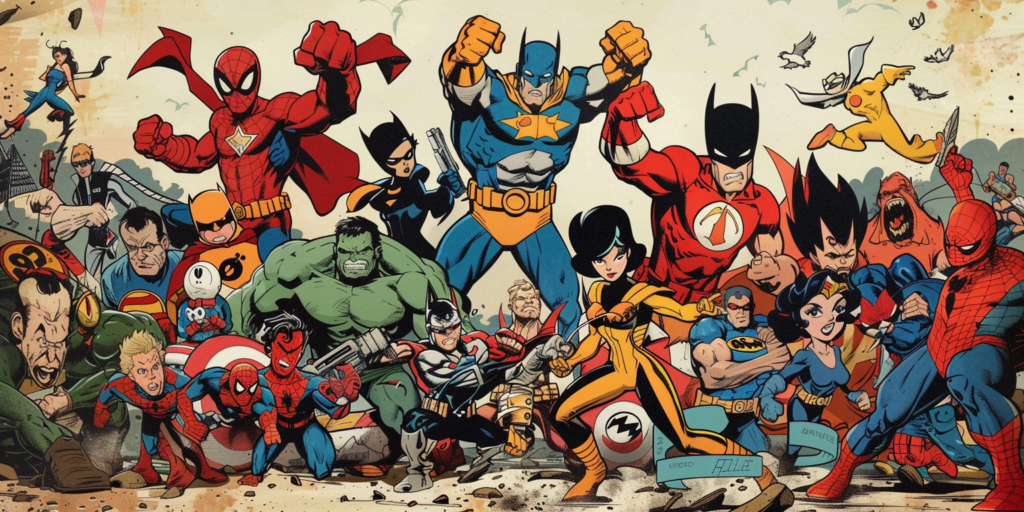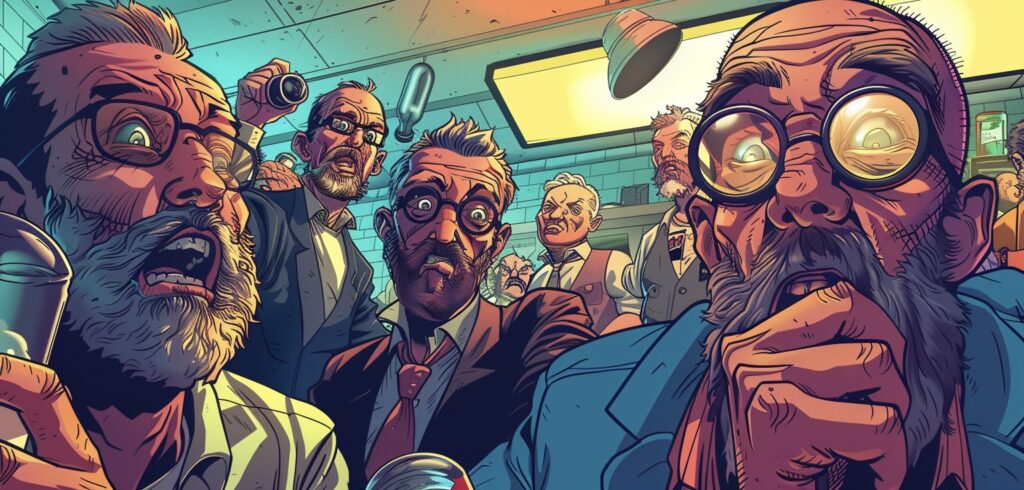Cartoons have been a significant part of our cultural landscape for decades. They entertain, educate, and often reflect the societal norms and values of their time. More importantly, cartoons have the power to influence pop culture, shaping trends, behaviors, and even societal attitudes. This article explores how cartoons mirror the zeitgeist of different eras and how they, in turn, leave a lasting impact on pop culture.
The Evolution of Cartoons in Pop Culture
Early Beginnings
Cartoons have been around since the early 20th century, starting with simple black-and-white animations. Early cartoons like “Steamboat Willie,” which introduced Mickey Mouse, laid the foundation for the animation industry. These cartoons were primarily focused on slapstick comedy and simple narratives, providing escapism during tough times like the Great Depression.

The Golden Age of Animation
The period from the 1930s to the 1950s is often referred to as the Golden Age of Animation. Studios like Disney, Warner Bros., and MGM produced iconic characters such as Bugs Bunny, Daffy Duck, and Tom and Jerry. These characters became cultural icons, reflecting and influencing the societal norms of their time.
The Rise of Television Cartoons
The 1960s and 1970s saw the rise of television cartoons. Shows like “The Flintstones” and “The Jetsons” not only entertained but also offered a satirical look at contemporary life and future aspirations. These shows mirrored the societal changes and technological advancements of their eras.
The Modern Era
From the 1980s onward, cartoons became more diverse and sophisticated. Shows like “The Simpsons,” “South Park,” and “Family Guy” pushed the boundaries of what cartoons could address, incorporating adult themes, satire, and social commentary. These modern cartoons have become integral parts of pop culture, influencing language, fashion, and even political discourse.

Cartoons as a Mirror of Society
Reflecting Social Issues
Cartoons often reflect the social issues and cultural norms of their time. For example, “The Flintstones” mirrored the suburban, post-war American family, while “The Jetsons” represented the optimism and technological aspirations of the 1960s. More recently, “The Simpsons” and “South Park” have addressed a wide range of social and political issues, often pushing the boundaries of satire and social commentary.
Breaking Stereotypes and Promoting Diversity
In recent years, cartoons have become more inclusive, reflecting the growing diversity of society. Shows like “Steven Universe” and “Adventure Time” feature characters from various ethnic backgrounds and explore themes of gender and sexuality. This representation helps normalize diversity and promotes acceptance and understanding among viewers.
Shaping Generational Attitudes
Cartoons also play a role in shaping the attitudes and beliefs of different generations. For instance, the environmental messages in “Captain Planet” resonated with children of the 1990s, fostering a generation more conscious of environmental issues. Similarly, the anti-authoritarian humor of “The Simpsons” and “South Park” has influenced the skeptical and critical attitudes of Millennials and Gen Z.

The Influence of Cartoons on Pop Culture
Fashion and Merchandise
Cartoons have a significant impact on fashion and merchandise. Characters like Mickey Mouse, SpongeBob SquarePants, and Hello Kitty have become fashion icons, with their images appearing on clothing, accessories, and even high-end designer items. The commercialization of these characters has turned them into global brands, influencing trends and consumer behavior.
Language and Catchphrases
Cartoons often introduce new phrases and expressions into popular culture. Catchphrases like Bart Simpson’s “Eat my shorts!” or Bugs Bunny’s “What’s up, Doc?” become part of everyday language. These catchphrases not only reflect the humor and personality of the characters but also influence how people communicate and express themselves.
Memes and Internet Culture
In the digital age, cartoons have become a rich source of internet memes. Shows like “Rick and Morty,” “Adventure Time,” and “SpongeBob SquarePants” provide endless material for meme creators. These memes often capture relatable moments or humorous situations, spreading rapidly across social media and contributing to internet culture.

Cartoons in Political and Social Commentary
Satire and Critique
Cartoons have long been used as a tool for satire and critique. “The Simpsons,” “South Park,” and “Family Guy” are known for their sharp social and political commentary. These shows tackle controversial topics, criticize public figures, and challenge societal norms, often sparking discussions and debates among viewers.
Advocacy and Awareness
Cartoons also play a role in advocacy and raising awareness about important issues. For example, “The Boondocks” addresses racial issues and social justice, while “Steven Universe” promotes themes of love, acceptance, and mental health. By addressing these topics in a relatable and entertaining format, cartoons can educate and inspire viewers to think critically about social issues.
The Global Impact of Cartoons
Cultural Exchange
Cartoons are a form of cultural exchange, introducing audiences to different cultures and perspectives. Japanese anime, for instance, has had a significant impact on Western pop culture. Shows like “Naruto,” “Dragon Ball Z,” and “Pokémon” have garnered massive followings worldwide, influencing fashion, language, and even storytelling techniques in Western media.
Cross-Cultural Adaptations
Many cartoons are adapted for different cultures, often with changes to make them more relatable to local audiences. This cross-cultural adaptation helps spread cultural values and norms, fostering a greater understanding and appreciation of diversity. For example, the global success of “Dora the Explorer” has introduced children to basic Spanish vocabulary and Hispanic culture.
Economic Influence
The economic impact of cartoons is substantial. The animation industry generates billions of dollars annually through television shows, movies, merchandise, and theme parks. Iconic characters and franchises become global brands, driving economic growth and creating jobs in various sectors.

The Future of Cartoons in Pop Culture
Technological Advancements
Advancements in technology continue to shape the future of cartoons. The rise of computer-generated imagery (CGI) and virtual reality (VR) is creating new possibilities for animation, making it more immersive and visually stunning. These technological advancements will likely influence how cartoons are produced and consumed, pushing the boundaries of storytelling and visual art.
Streaming Services and Accessibility
The advent of streaming services like Netflix, Disney+, and Hulu has revolutionized the way we consume cartoons. These platforms offer a vast library of animated content, making it more accessible than ever. This increased accessibility allows for a more diverse range of cartoons to reach global audiences, further influencing pop culture.
Social Media and Interactive Content
Social media platforms have become powerful tools for promoting and engaging with cartoons. Creators can interact directly with fans, share behind-the-scenes content, and even incorporate fan feedback into their work. Additionally, interactive content, such as choose-your-own-adventure stories, is becoming more popular, allowing viewers to engage with cartoons in new and innovative ways.

Final Words
Cartoons are more than just entertainment; they are a reflection of our society and a powerful influence on pop culture. From shaping generational attitudes and introducing new fashion trends to providing sharp social commentary and fostering cultural exchange, cartoons play a multifaceted role in our lives. As technology continues to evolve and the world becomes more interconnected, the influence of cartoons on pop culture will only grow stronger, cementing their place as a vital and dynamic force in our cultural landscape.
Frequently Asked Questions about How Cartoons Reflect and Influence Pop Culture
In what ways do cartoons reflect pop culture trends and societal values?
Cartoons often reflect current pop culture trends by incorporating references to fashion, music, slang, and other aspects of contemporary society. They can also mirror societal values by addressing relevant social issues or depicting cultural norms and attitudes.
How do cartoons influence popular culture and societal perceptions?
Cartoons have a significant influence on popular culture by shaping perceptions, introducing new ideas, and promoting cultural icons or trends. They can influence attitudes towards topics like diversity, environmental awareness, and ethical behavior through their storytelling and characters.
Can cartoons impact language and expressions used in everyday life?
Yes, cartoons frequently introduce new catchphrases, slang, and expressions that become part of everyday language. Memorable lines or comedic dialogue from cartoons can quickly spread through popular culture, influencing how people communicate and interact.
What role do iconic cartoon characters play in shaping pop culture?
Iconic cartoon characters, such as Mickey Mouse, SpongeBob SquarePants, or Pikachu, often transcend their original mediums to become cultural symbols. They appear in merchandise, advertising, and even fashion, influencing generations of fans and leaving a lasting imprint on popular culture.
How have cartoons adapted to reflect changing societal values over time?
Cartoons have evolved to reflect changing societal values by introducing diverse characters, addressing social issues, and promoting inclusivity. For example, modern cartoons may feature LGBTQ+ representation, tackle environmental concerns, or advocate for social justice, reflecting contemporary concerns and values.
What impact do crossover episodes and collaborations between cartoons and other media have on pop culture?
Crossover episodes and collaborations between cartoons and other media (such as movies, video games, or music) can expand a cartoon’s reach and influence across different audiences. They create opportunities for cross-promotion and deepen fan engagement, further embedding cartoon characters and themes into popular culture.
How do cartoons appeal to different generations and maintain relevance over time?
Cartoons often incorporate multi-layered humor, nostalgia, and universal themes that appeal to viewers of all ages. By balancing entertainment with storytelling that resonates across generations, cartoons can maintain relevance and continue to attract new audiences over time.
Can cartoons serve as a platform for cultural commentary and satire?
Yes, cartoons frequently use satire and parody to critique political figures, societal norms, or cultural phenomena. Through clever humor and visual storytelling, cartoons can offer commentary on current events and provoke thought about complex issues in a digestible and engaging format.
This post was created with our nice and easy submission form. Create your post!




One Comment